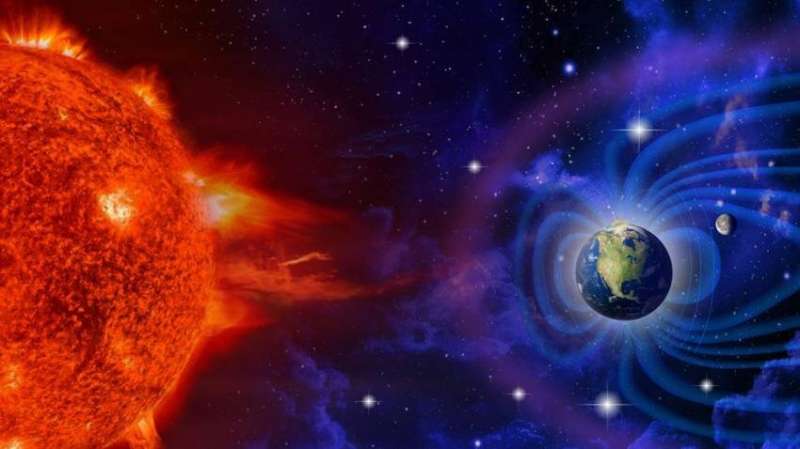"
To track the location of trains, a railway line is split into small, consecutive segments called "blocks" with an average length of 1–2 km. Each block is tied to a signal that tells you if there is a train currently in that block. The signals are controlled by relays that detect currents in the system. Synonymous to traffic lights, the signals turn green if the block is empty and a current is detected, or red if the block is occupied and no current is detected.
Solar storms can off-set the balance of currents controlling the light signals on train lines, causing lights to show clear sections as occupied with a red light. Evidence shows that stronger solar storms cause more signals to malfunction, thus increasing the amount time the train is delayed.
A team of researchers at the University of Lancaster have investigated the impacts of solar storms on two segments of the UK railway network: a South-North line from Preston to Lancaster and a West-East line from Glasgow to Edinburgh.
Technological problems can occur as a result of solar storms with a range of strengths: from medium storms with electric field strengths of 2 V/km to strong storms at 4 V/km. In the past, values of higher than 7 V/km have been detected along railways in Sweden. Estimates of extreme solar storms have predicted events with strengths of up to 20 V/km.
Interestingly, the results show that signaling failures occur even with moderate storms. So, while these estimates are unsettling, there is still cause for concern without these extreme storms.
Describing the future of his work, Patterson says: "We are now working on looking at the case where trains are present on the line, and how strong a storm needs to be to turn a red signal back to green—a far more hazardous scenario potentially leading to crashes."



